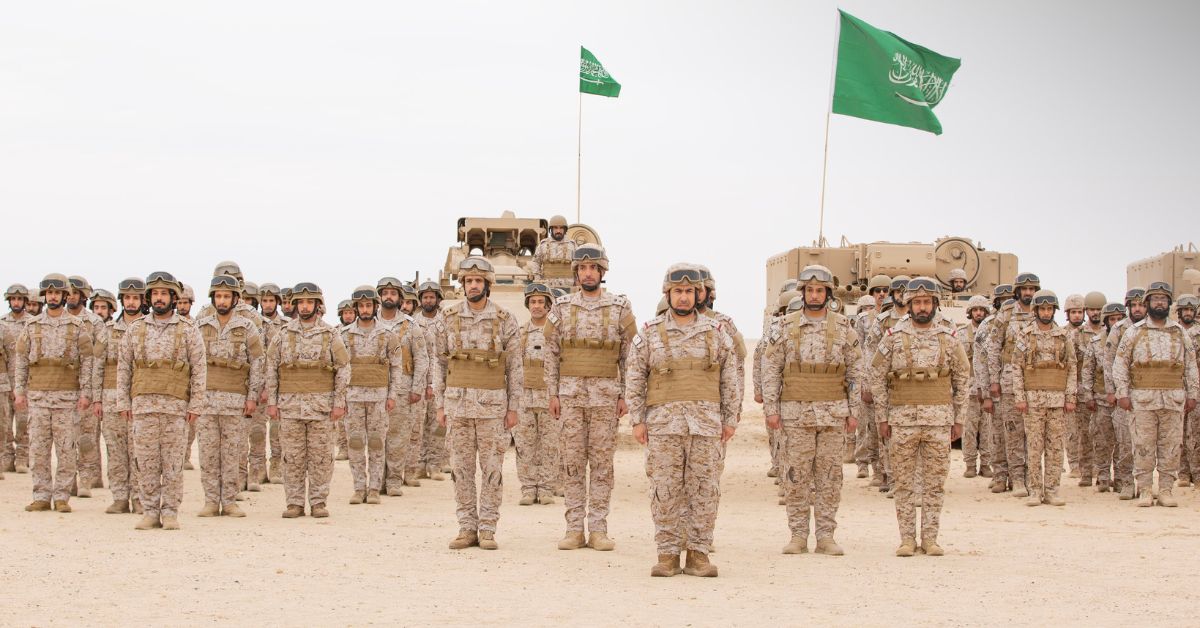RIYADH — Military spending in Saudi Arabia is expected to increase by about 8.7 percent over the current fiscal year, according to the recently announced 2024 budget. The Kingdom has allocated approximately US$ 71 billion for this sector in the 2024 budget, accounting for about 21.5 percent of total public spending.
This $41 billion increase in government spending on the same item from 2022 is attributed to various factors, the most notable being the ongoing progress in the localization of military industries, as well as the launch of development and modernization programs related to this vital sector.
In a press conference, Saudi Finance Minister Mohammed Al-Jadaan said that a 10-year budget has been allocated for the development and modernization of the military sector, adding that the increase in military spending is aimed at ‘modernizing the sector.’ The Minister also mentioned that improving military capabilities contributes to increased stability.
The budget statement justified the increase, citing ‘continuing progress in the localization of military industries.’
At A Glance Saudi Arabia's Military Spending Increase: The 2024 budget anticipates an 8.7% rise in military spending, totaling US$ 71 billion. Focus on Military Industry Localization: The increased budget allocation aims to advance the localization of military industries and development programs. 10-Year Military Sector Modernization Plan: Saudi Finance Minister Mohammed Al-Jadaan announces a decade-long budget for military sector development and modernization. National Strategy for Industry: Launched by Crown Prince Mohammed bin Salman, the strategy aims to localize over 50% of military spending by 2030. SAMI's Ambitious Goals: Saudi Military Industries Company (SAMI) targets becoming a top global military industry player by 2030. Strategic Defense Agreements: Saudi Arabia signs multiple agreements, including with Turkish defense companies for drone localization and with 'Scuba Military Industries' and 'Airbus' for helicopter industries. Lockheed Martin’s Naval Contribution: Plans to build a combat ship in Saudi Arabia, complementing the Royal Saudi Navy's 'Tuwaiq Project'. Raytheon's Missile Component Manufacturing: Considering production of Patriot missile components in Saudi Arabia. Collaboration with Boeing: SAMI and Boeing will establish a joint project for helicopter maintenance and services. Growth in Defense Industry Partnerships: Recent partnerships with 14 foreign companies reflect Saudi Arabia's commitment to expanding its defense industry.
Localization plans
According to the National Strategy for Industry, launched by Saudi Crown Prince Mohammed bin Salman in October 2022, the Saudi government intends to increase the localization rate to more than 50 percent of government spending on military equipment and services by 2030.
As per the strategy, the contribution of defense and military industries to the GDP is expected to reach 95 billion riyals in 2030, representing approximately 41 percent of the volume of the Kingdom’s military spending in 2022.
The General Authority for Military Industries and the Saudi Military Industries Company (SAMI), which is owned by the Public Investment Fund (PIF), are spearheading the efforts to localize military industries in the Kingdom. SAMI, in particular, aims to become one of the world’s top 25 military industries companies by 2030.
Global partnerships
Saudi Arabia has actively worked to strengthen its defense sector in recent years through strategic agreements. Last August, the Kingdom signed an agreement and two memorandums of understanding with three Turkish defense companies aimed at localizing the drone industry in Saudi Arabia. In June, agreements were made with ‘Scuba Military Industries’ and ‘Airbus’ to localize the civil and military helicopter industries within the Kingdom, with an initial phase valued at US$6.7 billion.
In previous press statements, Muhammad Al-Ajlan, Chairman of the Board of Directors at Scuba, anticipated that the investment volume between his company and Airbus would reach US$2 billion over the next decade, with production commencing within two years.
Last February, Ray Beselli, Vice President of International Business at Lockheed Martin, an American firm, expressed the company’s intention to build a combat ship in Saudi Arabia. This followed the Royal Saudi Navy’s inauguration in October of the previous year of the main beam of the second ship of the ‘Tuwaiq Project’ ships, which includes constructing four combat ships.
Continuing in the same direction, a Raytheon official revealed last March that the American defense firm was considering manufacturing some components of the Patriot missile in Saudi Arabia. Additionally, the General Authority for Military Industries has announced two projects to localize the production of Thaad interceptor missile launchers and missile containers in collaboration with Lockheed Martin.

SAMI, on its part, announced a strategic partnership agreement with Boeing last year to establish a joint strategic project in Saudi Arabia. According to the agreement, the two companies will collaborate to provide maintenance, repair, and sustainment services for helicopters currently operational in the Kingdom. SAMI aims to achieve $5 billion in annual profits by 2030.
Walid Abu Khaled, CEO of SAMI, previously stated that the company has an investment plan worth 6 to 7 billion riyals for the upcoming year.
Recently, the company has also signed partnerships with 14 foreign companies, including three of the world’s most significant, indicating an active pursuit of acquisition deals both within and outside the Kingdom, as well as forming partnerships with leading global defense companies. These agreements are aimed at bolstering the role of the Kingdom’s defense industry and its critical industrial sector.
The Saudi Crown Prince underscored the importance of the industrial sector in his speech during the approval of the 2024 budget. He affirmed the Kingdom’s commitment to developing this sector, recognizing it as ‘one of the most important vital sectors in the Saudi economy.’
This commitment includes diversifying the industrial base and value chains through the National Strategy for Industry. The strategy focuses on 12 sub-sectors with the goal of diversifying the industrial economy and enhancing the sector’s overall strength.








